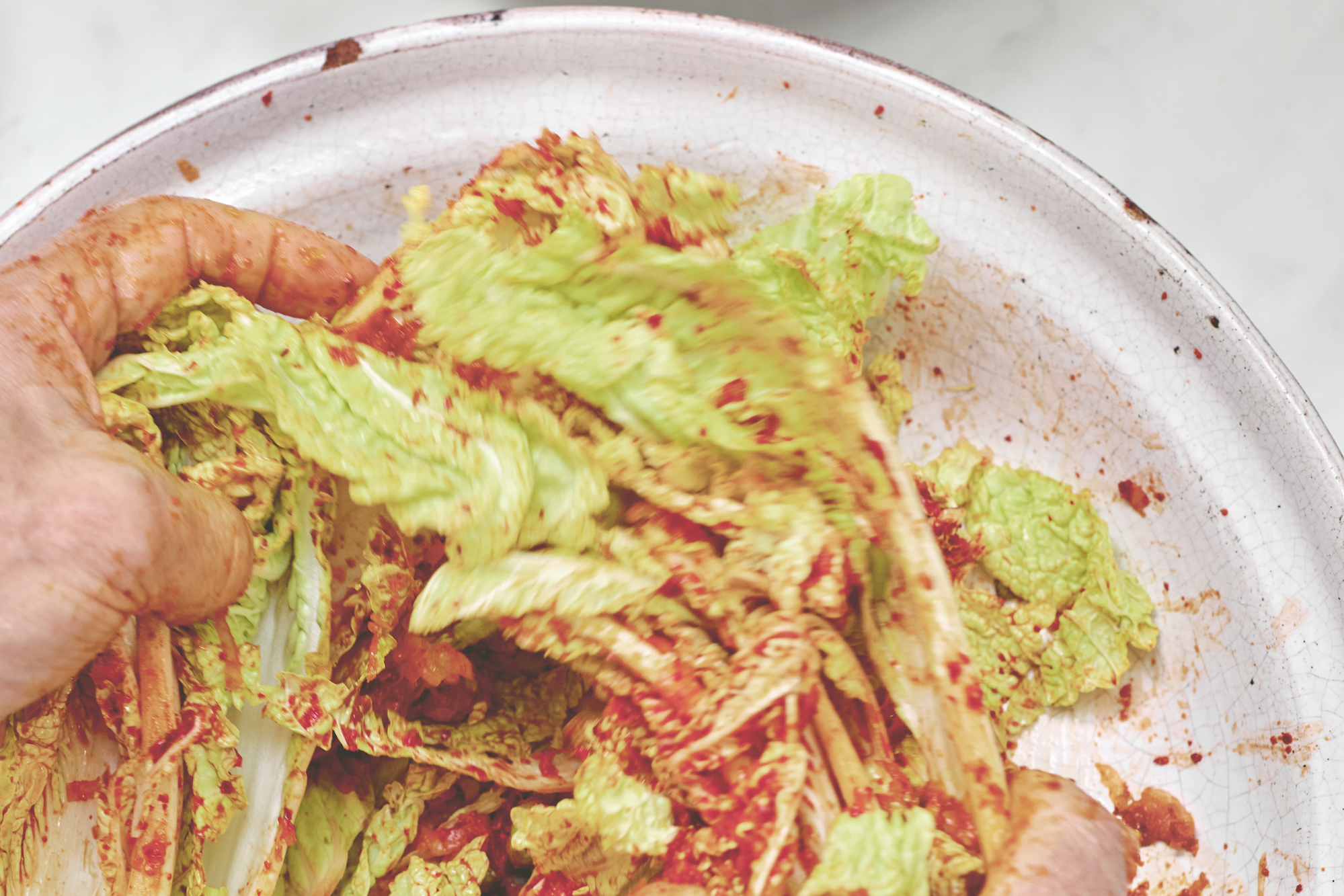Korean condiment kimchi is a delicious accompaniment to a lot of dishes.
But making kimchi can be challenging. However, a new shortcut offers a faster approach.
Scientist and author Tim Spector, in his book Ferment, explains: "this is a short cut for those who want a faster recipe, cutting out the traditional two-stage salting process."
He adds: "You can use any whole cabbage, Chinese/napa cabbage and/or daikon (Japanese radish) for this recipe."

Ingredients:
(Makes 1 jar)
1 cabbage or Chinese/napa cabbage1 daikon radishSea salt4 garlic cloves1 bunch of spring onions, trimmed and sliced1–2tbsp Korean chilli flakes (gochugaru)1tbsp soy sauce1tbsp fish sauce (or fermented miso paste for vegans)
Method:
1. Trim the cabbage and cut it into 4–5mm thick slices. Trim and peel the daikon and cut into thin half-moons.
2. Weigh the combined vegetables, tip into a bowl and add 2 per cent salt of the total weight.
3. Using your hands, massage the salt into the vegetables until they are starting to soften, then cover the bowl and set aside at room temperature for about four hours.
4. Combine the garlic, spring onions, chilli flakes, soy sauce and fish sauce in a food processor and pulse to combine.
5. Add to the vegetables and mix well to thoroughly coat them.
6. Pack tightly into a clean jar ensuring that the vegetables are submerged beneath the brine. If necessary, add a little 2 per cent brine (i.e. 2g salt for every 100ml water) to cover.
7. Press weights on top and loosely cover with a lid, then leave in a cool, dark place for five to 10 days until fizzy.
8. Transfer to the fridge and eat within one to two months.
Variation: Leftover kimchi
1. Chop any spare vegetables including peppers, brassicas, carrots and onions (but avoid anything too leafy and too soft) into 4–5mm slices. Finely chop a few garlic cloves, a thumb of ginger and two to three chillies and add to the mix.
2. Weigh the prepared vegetables and add 2 per cent sea salt and a good amount of chilli flakes (Korean or ordinary) and mix to combine.
3. Using your hands, massage the vegetables for a couple of minutes to soften and then leave in a covered bowl for an hour.
4. Then tightly pack/squash forcibly into clean jars, making sure that the vegetables are submerged below the resulting brine. If necessary, you can top up the liquid with 2 per cent brine.
5. Cover loosely with a lid, sit the jar on a plate and store somewhere dark and cool for a week, burping the resulting gas every day or so. Store in the fridge and eat within two to four weeks.
Ways to enjoy krauts and kimchi:
● Add to salads or stir into rice or grain dishes – kimchi is particularly delicious in egg-fried rice or served with noodles.
● Add to cream cheese as a spread – a great idea for kids.
● Add sauerkraut to a Reuben sandwich with pastrami, salt beef or mushroom pate on rye bread.
● With cheese and bread or in toasted cheese sandwiches.
● Add to dumplings or macaroni cheese or serve alongside scrambled or fried eggs.

Ferment: The Life-Changing Power of Microbes by Tim Spector is published in hardback by Jonathan Cape, priced £25. Available now.
From Marmite to Tabasco: the everyday foods Tim Spector says can improve gut health
Raymond Blanc on King Charles, kitchen gardens and championing veg before it was cool
From Le Manoir’s gardens to your table: Raymond Blanc’s vibrant veg casserole
The world’s love for matcha is about to be tested: ‘It’s going to be a tough ride’
Em the Nutritionist’s healthy recipes to make September feel a little easier
From pancakes to poke bowls, six tasty recipes that love your gut back







